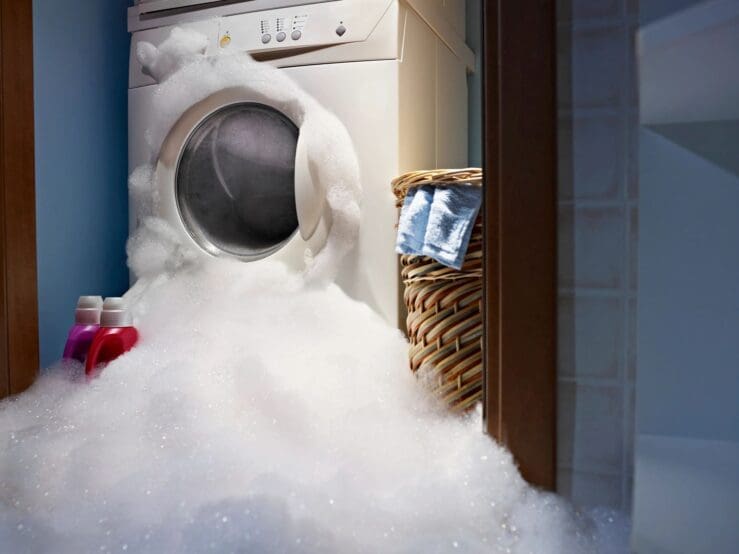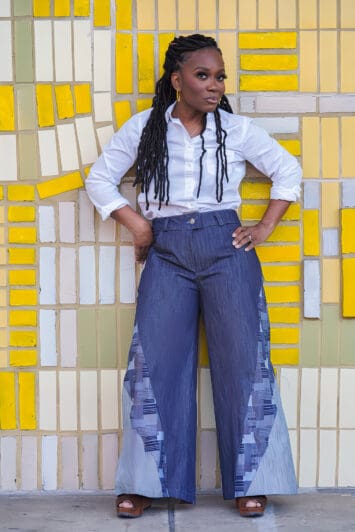The Best Brilliant Results when you Prewash Fabric

Prewash is a major step in beginning the sewing process. As a beginner in sewing, you might wonder why washing fabric before using it for a project is important. The answer is simple: prewashing fabric is necessary to prevent any shrinkage or color bleeding that may occur after the garment is finished. In this blog post, we’ll teach you how to properly prewash fabric.
To Prewash or Not to Prewash? Unraveling the Fabric Prep Mystery
Ah, the age-old sewing conundrum: to prewash or not to prewash? It’s a question whispered in fabric stores, debated in online forums, and passed down through generations of stitchers. Like everything in the creative realm, the answer isn’t a simple yes or no. It’s a tango between risk and reward, a delicate dance with a spool of possibilities.
The Case for Prewashing Fabric:
- Shrinkage Savior: Let’s face it, nobody wants to pour their heart and soul into a meticulously sewn garment only to have it shrink in the wash and become a wearable dollhouse. Prewashing fabric helps shrink fabrics to their final size, ensuring your masterpiece retains its intended form.
- Dye Dilemmas: Unwashed fabrics, especially vibrant ones, can harbor excess dye. This could lead to color bleeding, staining other fabrics in your washing machine, or even leaving your finished garment with unwanted hues. Prewashing helps release and trap any rogue dye, keeping your creation color-fast and beautiful.
- Starchy Suspects: Some fabrics are treated with starch during manufacturing, giving them a stiff and crisp feel. While this might be handy for some projects, it can make working with the fabric difficult and affect the final drape. Prewashing fabric washes away the starch, leaving you with a softer, more manageable material.
How to Prewash Your Fabric
Step 1: Check the Fabric Care Label
Before washing any fabric, it’s important to read the care label. The care label will indicate the best way to clean a particular fabric. Some fabrics require special care, such as hand-washing or dry cleaning. If the fabric can be washed in a machine, check the temperature, as some fabrics may shrink or fade if washed at high temperatures.
Step 2: Sort by Color and Type
Separate your fabrics by color and type. Wash dark and light-colored fabrics separately to avoid color bleeding. Group fabrics of similar types, such as cotton and linen, together with the same washing requirements. This will prevent damage to the fabric and ensure they are washed properly.
Step 3: Use a Gentle Detergent
It’s important to use a mild, gentle detergent when washing fabric. Harsh detergents can damage the fibers and cause fading or shrinkage. Avoid using fabric softeners as they can coat the fabric and affect the absorption of dyes or paints later on in the sewing process. I generally use Woolite or no detergent at all.
Step 4: Select the Right Temperature
An important step that should not be overlooked when prewashing fabric is the temperature. Again, check the care label for the recommended temperature. If the label isn’t clear, stick to washing at 30°C or below. Washing at high temperatures can cause shrinkage and damage to delicate fabrics.
Step 5: Drying, as important as the wash
After washing, gently squeeze out excess water. Avoid wringing, twisting, or stretching the fabric, as this can cause damage. Hang the fabric to dry or use a dryer on a low heat setting. Avoid drying in direct sunlight, as this can cause fading.
But Wait, There’s More to prewashing Fabrics:
Prewashing isn’t always the magical solution. Here are some situations where it might not be necessary:
- Fabrics that Resist Shrinkage: Natural fibers like linen and hemp are notorious shrinkers, but some synthetics, like knits and prewashed fabrics, have already overcome this hurdle. Check the fabric label for shrinkage information before taking the plunge.
- Delicate Dreams: Some delicate fabrics, like silk or velvet, can be easily damaged by washing. If you’re unsure, it’s best to err on the side of caution and skip the prewash fabric situation–you might cry after you’ve messed up your favorite fabric.
- The Vintage Vibe: If you’re working with vintage fabrics, they might already have shrunk and have their own unique character. Prewashing could further soften them or remove desired imperfections.
Ultimately, the decision to prewash rests in your hands. Consider the fabric type, potential risks, and desired outcome. If unsure, a quick test wash on a small scrap can be your trusty guide.
Remember, sewing is an adventure, and learning goes hand-in-hand with every stitch. Be bold, experiment, and don’t be afraid to embrace the occasional happy accident. And, above all, have fun unraveling the mysteries of fabric and creating wearable works of art.
So, will you prewash? The choice is yours. Remember, whether you dive headfirst into the washing machine or tread cautiously with the dry rack, your creativity is the needle that stitches it all together.
In conclusion, prewashing fabric is an important step in the sewing process. By following these steps, you can ensure that your fabric is clean, colorfast, and ready to use for your next sewing project.
Happy sewing!


